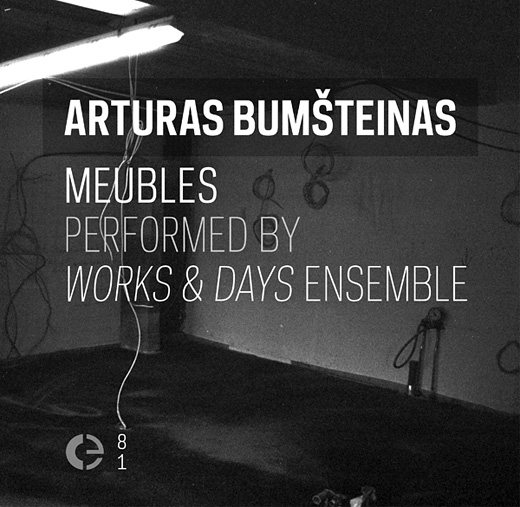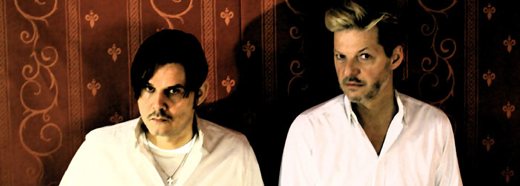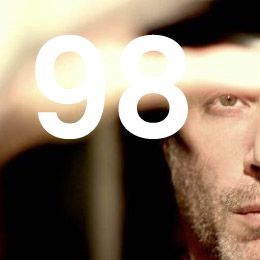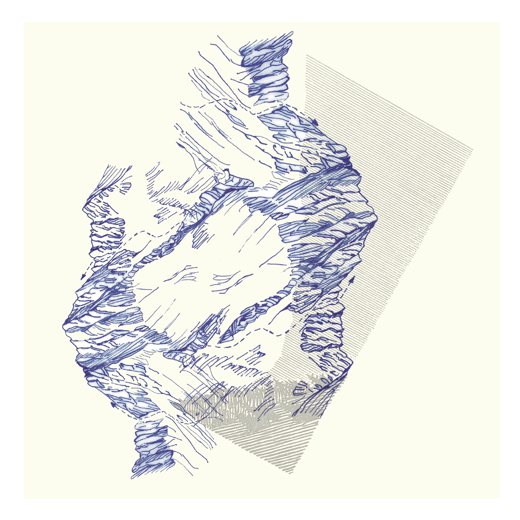
Crónica is delighted to present the new release of Arturas BumÅ¡teinas, “Meublesâ€, performed by the Works & Days ensemble.
- HSZCZ (17:05)
- LLULL (20:06)
- DAVID (13:20)
Recorded and mixed by Arturas Bumšteinas on various portable studios, 2011-2013.
Performed by the Works & Days ensemble:
- Arturas Bumšteinas (1, 2, 3) — electric organs, sampler, flute
- Ilia Belorukov (1, 2), Maarten Ornstein (3) — saxophones
- Kamil Szuszkiewicz (2) — trumpet
- Lina Lapelytė (1), Tadas Žukauskas (2) — violins
- Anton Lukoszevieze (2) — cello
- BirutÄ— AseviÄiÅ«tÄ— (2) — piano
- Piotr Bukowski (1), Bartek Kalinka (3) — guitars
- Hubert Zemler (2, 3) — percussion
Arturas Bumšteinas
If music could be furniture, which piece of furniture it would be?
Anton Lukoszevieze
If music could be furniture it would be an ornamental chaise longue, covered with purple velvet and with intricate carved wooden legs. I would lie on this chaise longue for hours, sipping green tea and caressing a meek and mild Ocelot.
Hubert Zemler
If music was furniture it would be something that isn’t essential for living, but essential for being a human. Something that could be easily dispensed of, but you would miss it. Something that contains love, hate, tears, happiness, sadness, calmness, enthusiasm, boredom, amusement or any emotions you can feel. Something which sometimes contains nothing. Something which not everybody needs or wants. I don’t know… Maybe music would be a wine cabinet?
Bartek Kalinka
I would like music to be a stove. Because it’s a place where cooking is done, so it’s an alchemical altar, where substances are transferred by the music’s heat.
Kamil Szuszkiewicz
A bed. Definitely. Human civilization has began when people invented some kind of bed (no, not a circle; circle was much later). We are born in a bed, we die there, we sleep, fuck, lay there looking up to a ceiling and pondering. The rest of a lifetime seems to be meaningless interruption. I want music to be like that: ancient, basic, necessary (in a way).
BirutÄ— AseviÄiÅ«tÄ—
Music is not material thing, so it’s hard to materialize it… But… if music could be a furniture, it could be “pufikas†(tuffet with removable top). You can put anything inside, but nobody knows, what’s really inside it… It can have many segments inside, but it can be empty as swell. And you don’t feel you really have this kind of furniture (music), it exists somewhere, beside you or very near. It can have different forms, many segments or just “to beâ€.
Tadas Žukauskas
If music could be furniture it would be a window. Medium between myself and the Images of the World or the Imagination itself.
Piotr Bukowski
Billy Bookcase by IKEA — basic furniture in every home. You can use it it to store whatever you need, it uses space effectively by accommodating various items in a minimum of space. Known all over the world, flag product of IKEA, cheap and practical.
Ilia Belorukov
A couch. One may sit or sleep on it; one may also unfold it to get more space. It is not a univocal piece of furniture, it has multiple functions. The couch reminds me of the fact that music is just as multi-faceted, and the perception of sound largely depends on the listener – namely, his or her wishes/moods/needs. If you want to lie down, here you go; if you need more seats for guests – just move the couch closer to the table. One can immerse oneself in a music piece or merely use it as a background.
Maarten Ornstein
Furniture? Well, a bed I suppose. It’s nice to lie down in some good music.
Lina LapelytÄ—
If i could be music and if this music could be furniture then with no doubt i would prefer to be music & furniture than just to be furniture or just to be music. If i could be music, furniture and a woman — that would really please me! On the other hand — i would probably annoy somebody if i am a sofa or dinning table that always produces a certain tune.. How boring it would be to have me around! I probably would end up being thrown away… and the good thing about that is that undoubtedly i would travel to a new house – somebody would be very happy to find a musical table or sofa that maybe is also a woman. So to be clear – i would like to be a little drawer in the closet – so i am only audible when wanted. Did i get the question right?
You can download “Meubles†from Crónica’s bandcamp page, from Boomkat or other selected retailers in a variety of formats!








